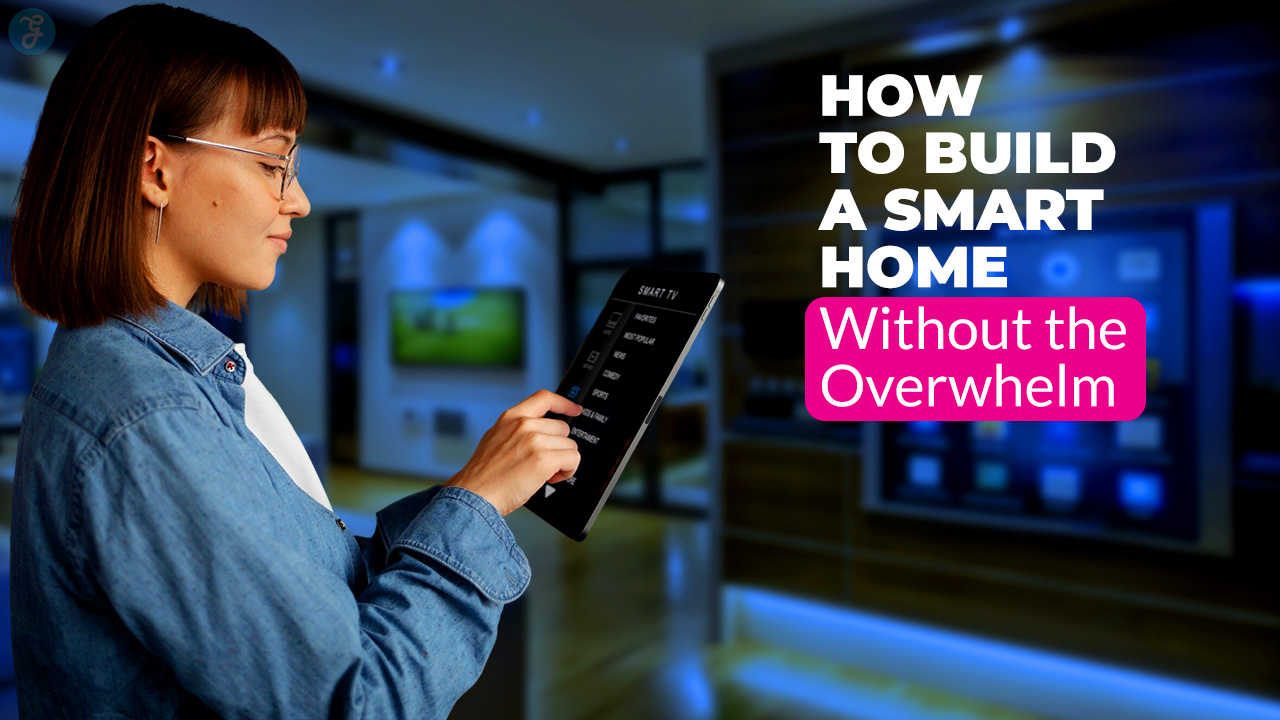In the ever-evolving landscape of fitness and technology, 2025 promises to be a groundbreaking year. The advent of wearable technology has already reshaped how we approach health and fitness, and this transformation shows no signs of slowing down.
From smartwatches to virtual reality fitness tools, wearable tech is bridging the gap between innovation and wellness. This “Wearable Tech Fitness Revolution” is not just a trend but a paradigm shift that’s making personalized fitness accessible to everyone.
These devices are empowering individuals with actionable insights, gamified workouts, and seamless integration with broader health ecosystems.
With advancements in artificial intelligence, sustainability, and connectivity, wearable tech is set to redefine fitness in ways we couldn’t have imagined a decade ago.
In this article, we explore 10 ways wearable tech will revolutionize your fitness journey, offering cutting-edge solutions for achieving health goals, boosting motivation, and enhancing overall well-being.
10 Ways Wearable Tech Will Revolutionize Your Fitness Journey in 2025
Let’s get into the details:
1. Real-Time Health Monitoring: Personalized Fitness Insights
Real-time health monitoring is at the forefront of wearable tech innovation. Devices now offer insights into heart rate, oxygen saturation, stress levels, and even ECG readings.
This data enables users to optimize their workouts by staying within target zones for fat burning, endurance, or strength training.
For example, athletes can use real-time data to avoid overtraining and ensure peak performance.
Everyday users benefit from better tracking of their activity levels and proactive health management.
Devices Leading the Way
- Smartwatches like the Apple Watch Series 9 and Garmin Fenix 7 provide advanced health metrics such as VO2 max and recovery times.
- Wearable ECG Monitors like KardiaMobile help detect irregular heart rhythms, enabling users to proactively manage potential health risks.
Actionable Tip: Use heart rate data to create a personalized workout plan by calculating your maximum heart rate (220 minus your age) and targeting 50-85% of that number during exercise for optimal results.
Key Features of Top Health Monitoring Devices
| Device | Key Metrics Tracked | Price Range |
| Apple Watch 9 | Heart rate, ECG, oxygen levels | $399-$499 |
| Garmin Fenix 7 | VO2 max, stress levels, recovery | $699+ |
| KardiaMobile | ECG and atrial fibrillation alerts | $99-$149 |
2. Advanced Sleep Tracking for Recovery Optimization
Quality sleep is essential for muscle recovery, cognitive function, and overall health. Wearable devices now track sleep cycles, including REM and deep sleep, providing actionable insights to improve rest.
With these insights, users can optimize their routines to prioritize recovery and performance.
For instance, understanding your sleep patterns can help you adjust bedtime habits, such as reducing screen time or improving sleep hygiene.
Features to Watch for in 2025
- Detailed Sleep Stage Analysis: Devices like Fitbit Sense offer comprehensive data to help users identify sleep disruptions.
- Smart Alarms: These alarms align with your sleep phases, ensuring you wake up at the optimal time for reduced grogginess and better energy levels.
Practical Example: A user who tracks consistent REM sleep deficits might adjust their nightly schedule, incorporating relaxation techniques like meditation or journaling before bed.
Top Wearable Devices with Sleep Tracking (2025)
| Device Name | Key Feature | Price Range |
| Fitbit Sense | Detailed sleep stages | $299-$349 |
| Oura Ring | Personalized sleep insights | $349+ |
| WHOOP Strap | Sleep performance analytics | $500+/year |
3. Virtual Coaching with AI-Driven Feedback
Gone are the days of generic fitness routines. AI-powered wearables analyze user data to create customized workout plans.
These virtual coaches adapt in real-time, ensuring routines align with performance metrics and personal goals.
For instance, a runner training for a marathon can receive tailored guidance based on pace, endurance, and recovery data. A beginner can benefit from incremental goal-setting based on their fitness level.
How AI Coaches Enhance Engagement
- Voice guidance during exercises keeps users on track.
- Real-time feedback on form and intensity prevents injuries and ensures effective workouts.
- Progress tracking motivates users to achieve milestones and make sustainable progress.
Example Insight: A virtual coach may notice declining performance trends and suggest reducing intensity or incorporating rest days.
AI-Powered Virtual Coaching Tools
| Device/App | Unique Feature | Price Range |
| Peloton AI Coach | Personalized cycling plans | $12.99/month |
| Lumen Tracker | Metabolic rate analysis | $249+ |
| Tempo Studio | AI form correction | $2,495+ |
4. Gamification to Boost Motivation
Gamification is a powerful motivator. Wearable tech transforms mundane fitness tasks into engaging challenges.
Users earn rewards, track achievements, and compete with friends or global users. Studies show that gamified fitness increases adherence to workout routines by up to 40%.
Apps Integrating Gamification Features
- Strava: Offers leaderboards, badges, and community challenges.
- Zwift: Combines cycling and running with interactive virtual environments.
- Nike Training Club: Gamifies workouts with progress milestones.
Actionable Tip: Join a Strava group to stay motivated by competing with peers or participating in monthly challenges.
Top Gamified Fitness Apps in 2025
| App Name | Gamification Features | Platforms |
| Strava | Leaderboards, achievements | iOS, Android |
| Zwift | Virtual challenges | iOS, PC |
| Nike Training | Milestone tracking | iOS, Android |
5. Nutrition Tracking for Holistic Fitness Management
Nutrition is as vital as exercise for achieving fitness goals. Advanced wearable devices now offer tools for tracking calories, macronutrients, and hydration levels.
Some even integrate with meal planning apps for seamless management. For instance, a smart patch can provide real-time glucose monitoring, helping users maintain energy balance during workouts.
Devices Offering Seamless Nutrition Monitoring
- Smart Patches: Measure glucose levels and hydration.
- Wearables Syncing with Apps: Platforms like MyFitnessPal integrate meal logs with fitness data for a comprehensive view of health.
Example Use Case: A user tracking hydration levels with a wearable patch increases water intake after noticing dehydration trends during workouts.
Nutrition-Focused Wearables
| Device/App | Key Feature | Price Range |
| Nutrisense Patch | Real-time glucose tracking | $350+/month |
| Hydration App | Tracks water intake | $50/year |
| MyFitnessPal | Comprehensive diet logging | $9.99/month |
6. Wearables for Mental Wellness and Stress Reduction
Mental wellness is an integral part of physical health. Wearables now incorporate features like guided meditation, stress level tracking, and breathing exercises to help users achieve a balanced state of mind.
Studies show that reducing stress enhances physical performance and recovery.
Tools to Help Stay Calm
- Guided Meditation Devices: Integrations with apps like Calm and Headspace.
- Stress-Level Indicators: Fitbit Sense’s stress management score provides actionable steps for stress reduction.
Actionable Tip: Use guided breathing exercises during high-stress periods to reset focus and lower cortisol levels.
Wearables for Mental Wellness
| Device | Mental Wellness Features | Price Range |
| Fitbit Sense | Stress management score | $299-$349 |
| Muse Headband | Meditation guidance | $250+ |
| WHOOP Strap | Strain and recovery tracking | $500+/year |
7. Enhanced Connectivity with IoT Integration
Wearable devices are becoming more interconnected, syncing seamlessly with IoT-enabled gym equipment and smart home systems.
This connectivity creates a cohesive fitness ecosystem, allowing users to track and control workouts from any location.
For example, smart gym equipment can automatically adjust resistance based on wearable data, and wearables can communicate with smart home systems to schedule recovery activities like light therapy.
Use Cases in 2025
- Smart Gym Equipment: Machines like Peloton automatically sync with your wearable to adjust difficulty based on performance.
- Home Integration: Wearables like WHOOP link with Alexa or Google Home to suggest post-workout recovery routines.
Actionable Tip: Use IoT-enabled wearables to connect with gym apps and home assistants for a seamless fitness and recovery experience.
IoT-Compatible Fitness Devices in 2025
| Device Name | IoT Integration | Key Feature | Price Range |
| Peloton Tread | Smart gym equipment | Auto-adjustable difficulty | $2,495+ |
| NordicTrack Vault | Home fitness integration | Virtual personal trainer | $1,999+ |
| WHOOP Strap | Smart home compatibility | Strain and recovery data | $500+/year |
8. AR and VR in Fitness: A New Dimension
Augmented Reality (AR) and Virtual Reality (VR) are revolutionizing fitness by providing immersive workout experiences.
Imagine cycling through a virtual French countryside or participating in an interactive HIIT class with real-time coaching.
These technologies not only make workouts more engaging but also add elements of fun and competition.
Trends to Watch in 2025
- Interactive VR Workouts: Programs like Supernatural VR offer guided sessions in stunning virtual environments.
- AR Outdoor Runs: AR glasses overlay real-time metrics, gamified challenges, or guided routes on your natural surroundings.
Actionable Tip: Pair VR devices with heart rate monitors to track performance in real-time and adapt intensity for better results.
Top AR/VR Fitness Tools in 2025
| Device Name | Unique Features | Price Range |
| Oculus Quest 3 | Immersive VR fitness apps | $499+ |
| Magic Leap AR | Gamified outdoor workouts | $2,999+ |
| Holodia VR | Interactive rowing games | $20/month |
9. Wearables for Injury Prevention and Management
Wearables now use biomechanical sensors to monitor movement patterns, detecting improper form or joint stress.
Predictive analytics alert users to potential overuse injuries or muscle strain, enabling early intervention.
For athletes, these tools are game-changers in avoiding downtime and maximizing performance.
Rehabilitation Support
Wearables like compression sleeves with embedded sensors guide users through rehab exercises, ensuring proper technique and tracking recovery progress.
Some devices also connect to physiotherapy apps that provide video demonstrations and progress tracking.
Actionable Tip: Use wearables to monitor overtraining by tracking metrics like heart rate variability (HRV) and recovery scores.
Injury Prevention and Rehabilitation Wearables
| Device Name | Key Feature | Price Range |
| Motus Sleeve | Joint stress monitoring | $299+ |
| Hyperice Venom | Muscle recovery support | $199+ |
| PhysiTrack App | Rehab exercise guidance | $15/month |
10. Sustainability in Wearable Tech
As sustainability becomes a priority, wearable tech companies are adopting eco-friendly practices.
From biodegradable straps to recycling programs, these innovations reduce the environmental impact of technology.
For instance, Garmin and Fitbit offer trade-in programs for old devices to encourage sustainable upgrades.
Energy-Efficient Wearables
Devices with solar charging capabilities and extended battery life are becoming increasingly popular. These features reduce the need for frequent charging, aligning with eco-conscious goals.
Actionable Tip: Choose wearables with solar charging or opt for brands offering recycling programs to minimize environmental impact.
Sustainable Wearable Innovations
| Innovation | Description | Example Brands |
| Biodegradable Straps | Eco-friendly materials | Garmin, Fitbit |
| Solar Charging | Energy-efficient batteries | Polar, Garmin |
| Trade-In Programs | Recycling/upcycling options | Apple, WHOOP |
Takeaway
The “Wearable Tech Fitness Revolution” is more than a buzzword—it’s a reality shaping how we approach health and wellness.
From real-time health monitoring to gamification, these innovations make fitness more accessible, engaging, and effective.
As we embrace 2025, wearable tech will continue to empower individuals to achieve their fitness goals, transforming lives one step at a time.
Whether you’re a beginner or a seasoned athlete, there’s never been a better time to integrate wearable technology into your fitness journey.








































